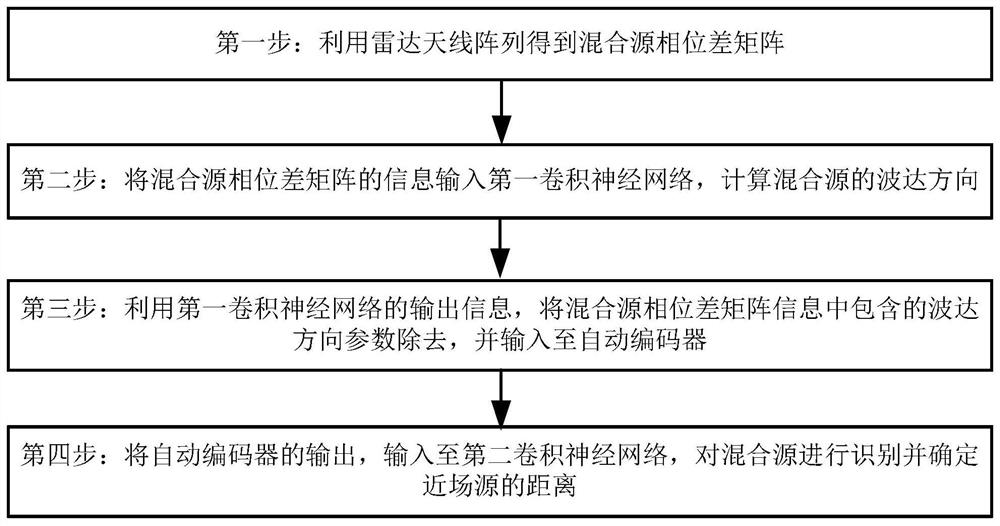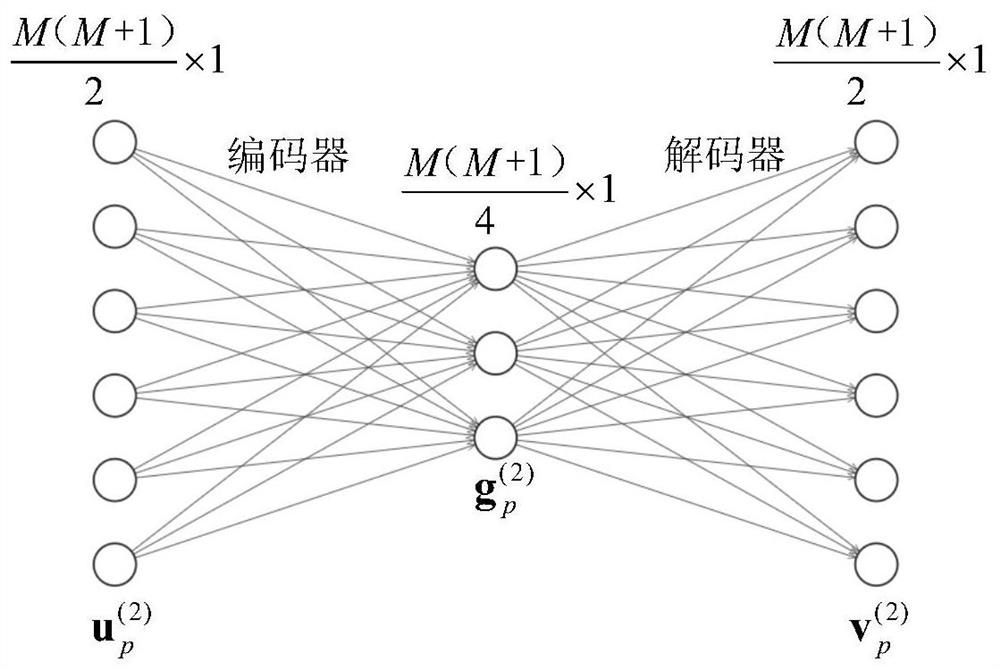Mixed source positioning method based on convolutional neural network
A convolutional neural network and source localization technology, which is used in the field of simultaneous localization of near-field and far-field sources using radar arrays, which can solve problems such as inability to locate near-field sources or mixed sources, and achieve faster convergence and larger arrays. Aperture, effect of reducing estimation time
- Summary
- Abstract
- Description
- Claims
- Application Information
AI Technical Summary
Problems solved by technology
Method used
Image
Examples
Embodiment Construction
[0032] The present invention will be further described below in conjunction with accompanying drawings and examples.
[0033] The present invention comprises the following steps:
[0034] First, use the radar antenna array to obtain the mixed source phase difference matrix; then, input the information of the mixed source phase difference matrix into the first convolutional neural network to calculate the direction of arrival of the mixed source; secondly, use the output of the first convolutional neural network Information, remove the direction of arrival parameter contained in the phase difference matrix information of the mixed source, and input it to the autoencoder; finally, input the output of the autoencoder to the second convolutional neural network to identify and determine the mixed source The distance to the near-field source.
[0035] Such as figure 1 As shown, the hybrid source localization method based on convolutional neural network includes the following steps...
PUM
 Login to View More
Login to View More Abstract
Description
Claims
Application Information
 Login to View More
Login to View More - R&D
- Intellectual Property
- Life Sciences
- Materials
- Tech Scout
- Unparalleled Data Quality
- Higher Quality Content
- 60% Fewer Hallucinations
Browse by: Latest US Patents, China's latest patents, Technical Efficacy Thesaurus, Application Domain, Technology Topic, Popular Technical Reports.
© 2025 PatSnap. All rights reserved.Legal|Privacy policy|Modern Slavery Act Transparency Statement|Sitemap|About US| Contact US: help@patsnap.com



